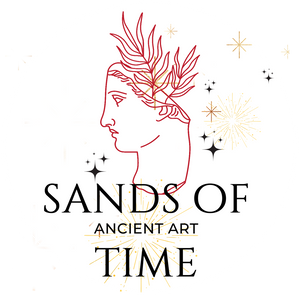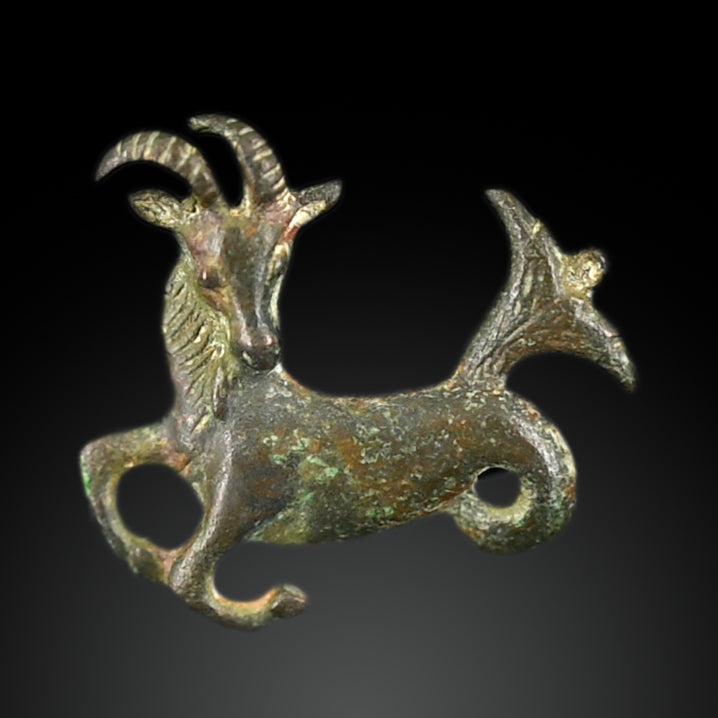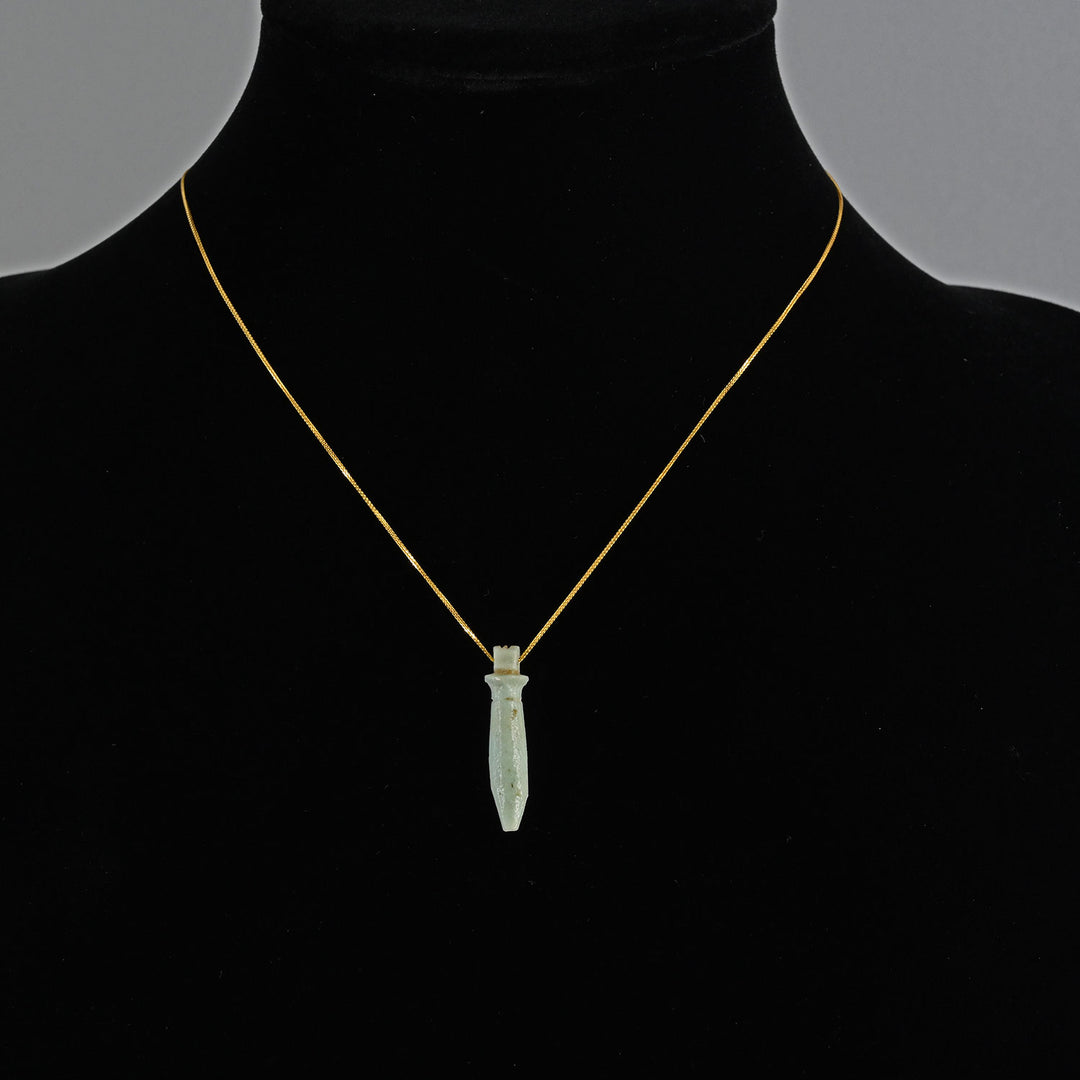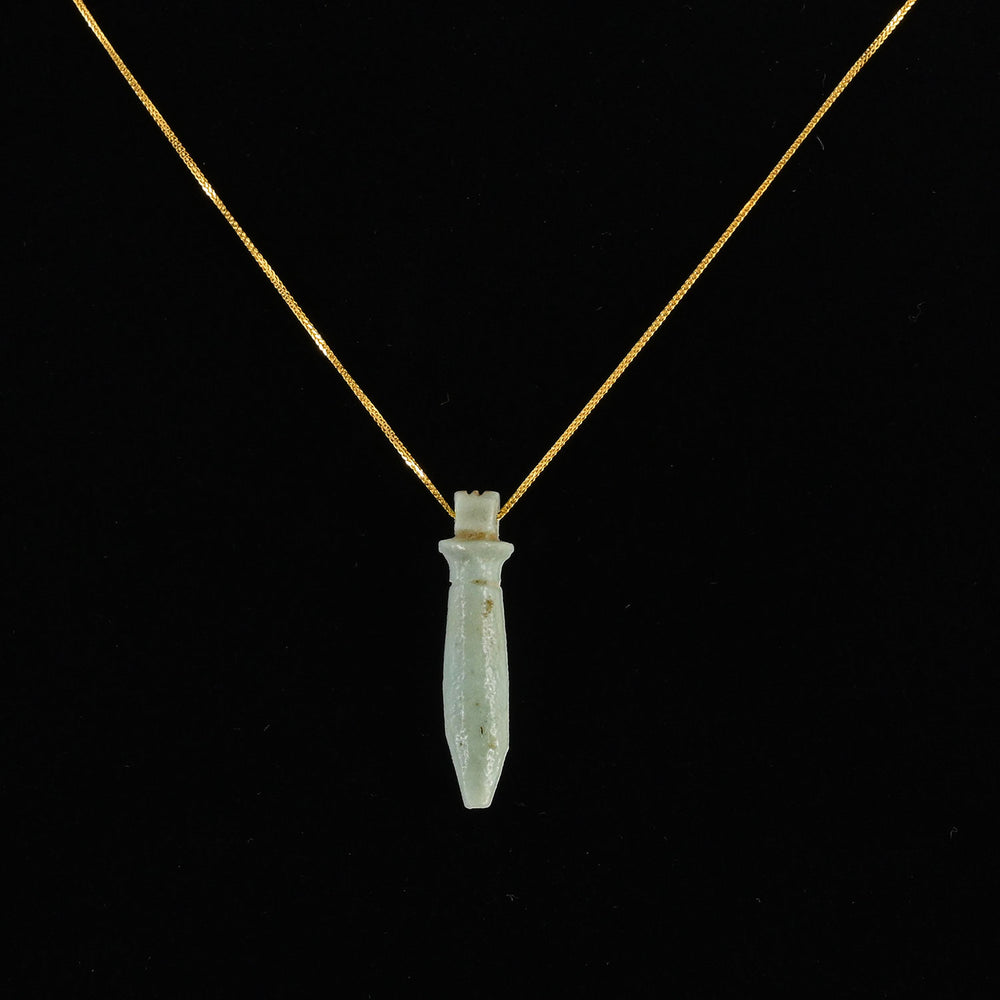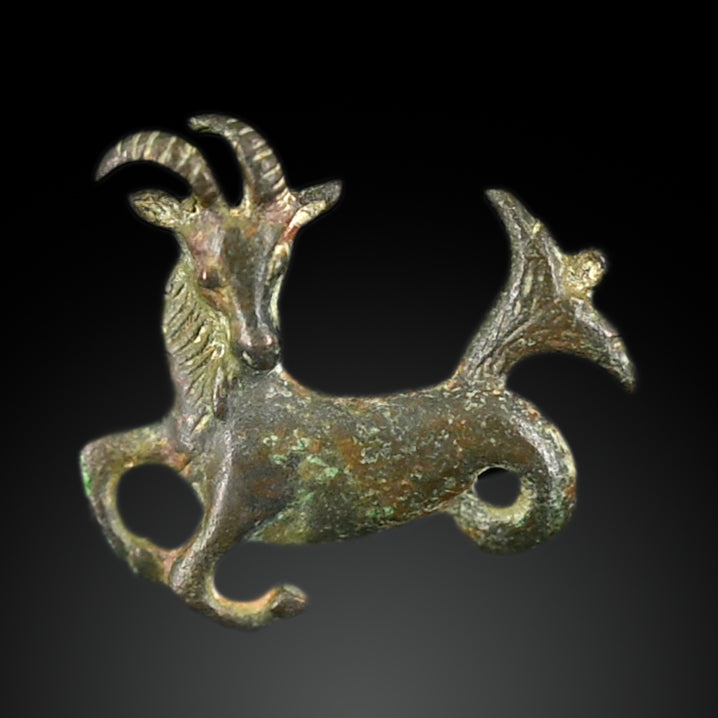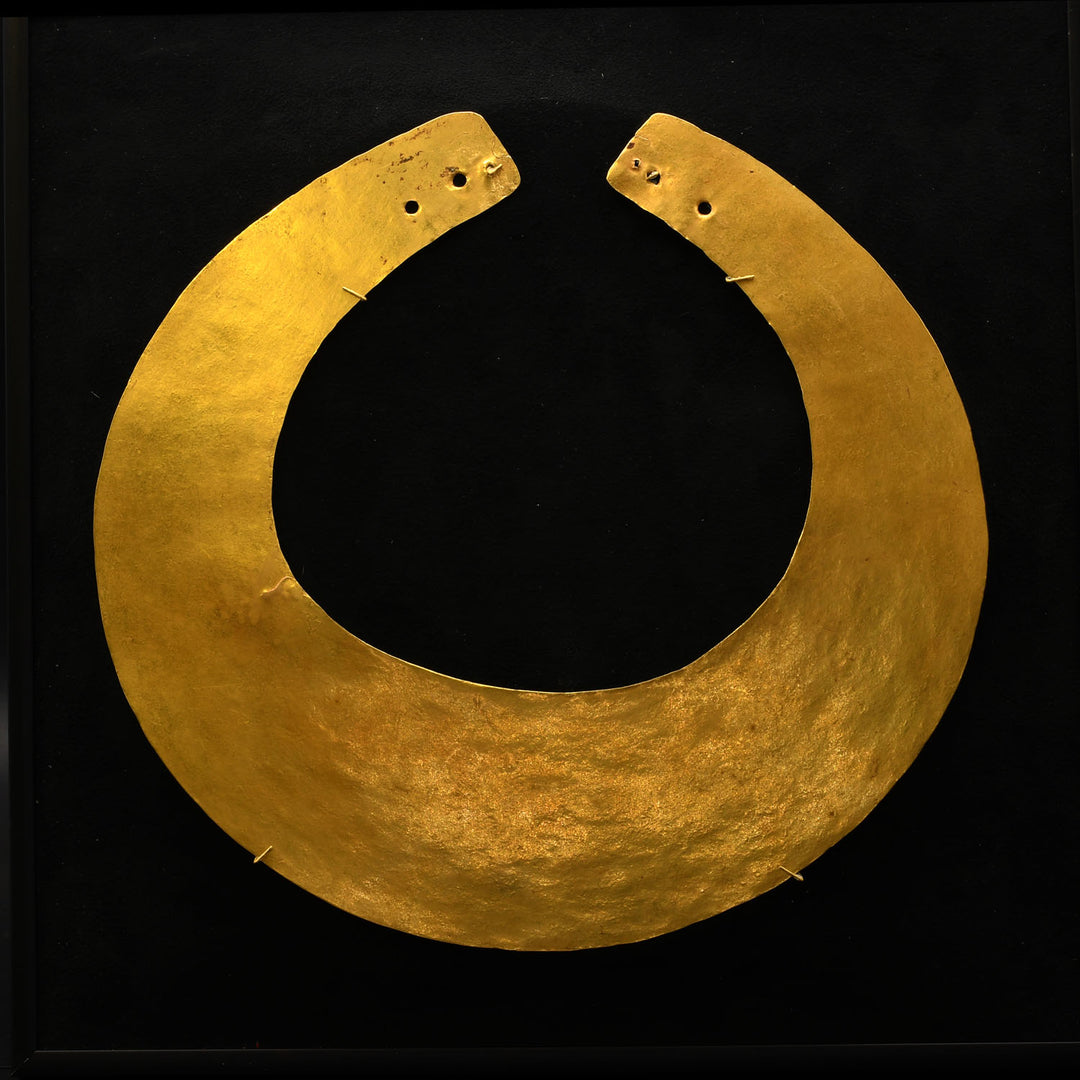An Egyptian Blue Glazed Wadj Amulet, Late Period, ca. 700 - 332 BCE
EA2152
- This object qualifies for free USA shipping and a flat rate fee of $60 if shipping internationally.
Known in Egyptian as a wadj, this papyrus-column amulet is made from green glazed faience, and has a pierced suspension ring at the top. Green fresh plant life represented youthfulness, new life and rebirth to the Egyptians, and the presence of this particular amulet on the body was to ensure that the deceased remained forever young, and was not injured. Both Chapters 159 and 160 concern a papyrus column of feldspar to be placed at the throat of the deceased: 'If it is sound, I am healthy; if it is undamaged, I am uninjured; if it is not struck, I am unwounded . .. my limbs shall not become dried out.'
A papyrus scepter was often carried by goddesses and the plant was the emblem of Lower Egypt and its patroness Wadjyt; hence its amuletic form not only guaranteed the wearer rejuvenation, it also linked them with the divine and in particular one of the great protective goddesses.
Condition: the amulet is intact and in excellent condition overall. It has been restrung as a pendant on an adjustable 18" modern chain of 18K yellow gold.
Dimensions: Height: 1 1/4 inches (3 cm)
Provenance: Private collection of Geoffrey Metz, Uppsala University, Sweden, acquired from the English trade in the 1990s.
Sands of Time provides a lifetime, unconditional guarantee of authenticity and provenance. Every object you purchase from us is accompanied by a Certificate of Authenticity, stating culture, provenance, and age.
Furthermore, we conduct due diligence to ensure the item, to the best of our knowledge, has not been illegally obtained from an excavation, architectural monument, public institution, or private property. Wherever possible, reference is made to existing collections or publications.Wherever possible, reference is made to existing collections or publications.
We ship Tuesday to Friday with FedEx and usually same day if your order is received before 2pm. Within the continental USA, packing, shipping and insurance is free. Depending on size and destination, delivery times range from one to five business days.
For overseas shipments we charge a small flat rate which includes packing, preparation of all customs paperwork, insurance and carrier fees in compliance with all USA and International customs requirements. Overseas shipments are sent using either USPS Priority Mail or FedEx but contact us if you have a shipping preference. International customers are responsible for all duties and taxes.
